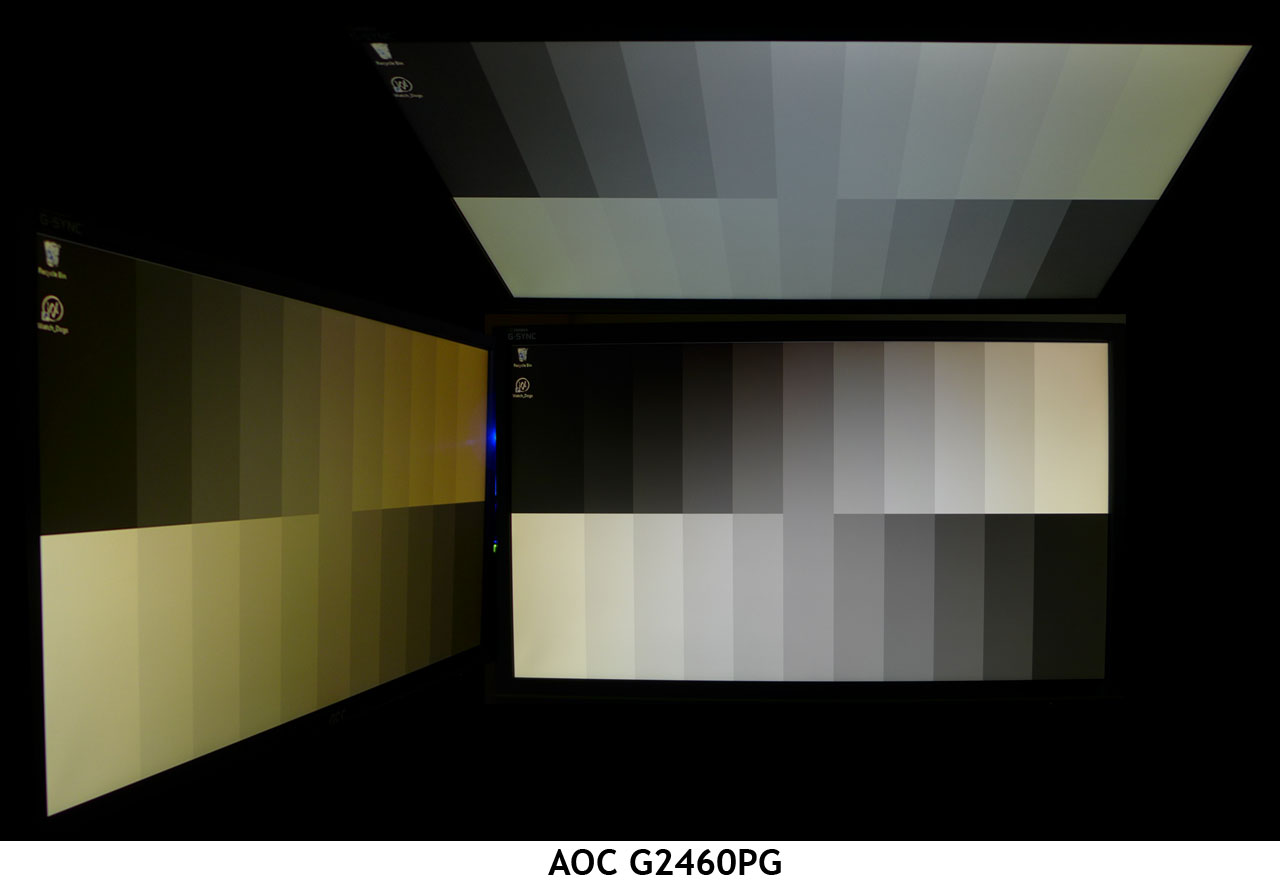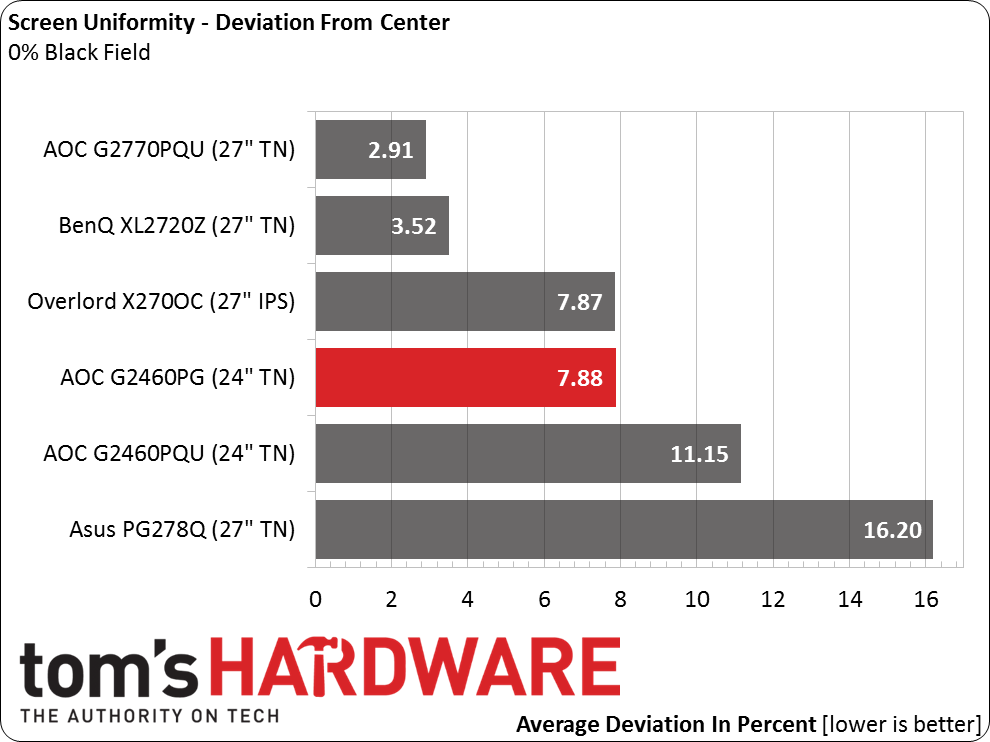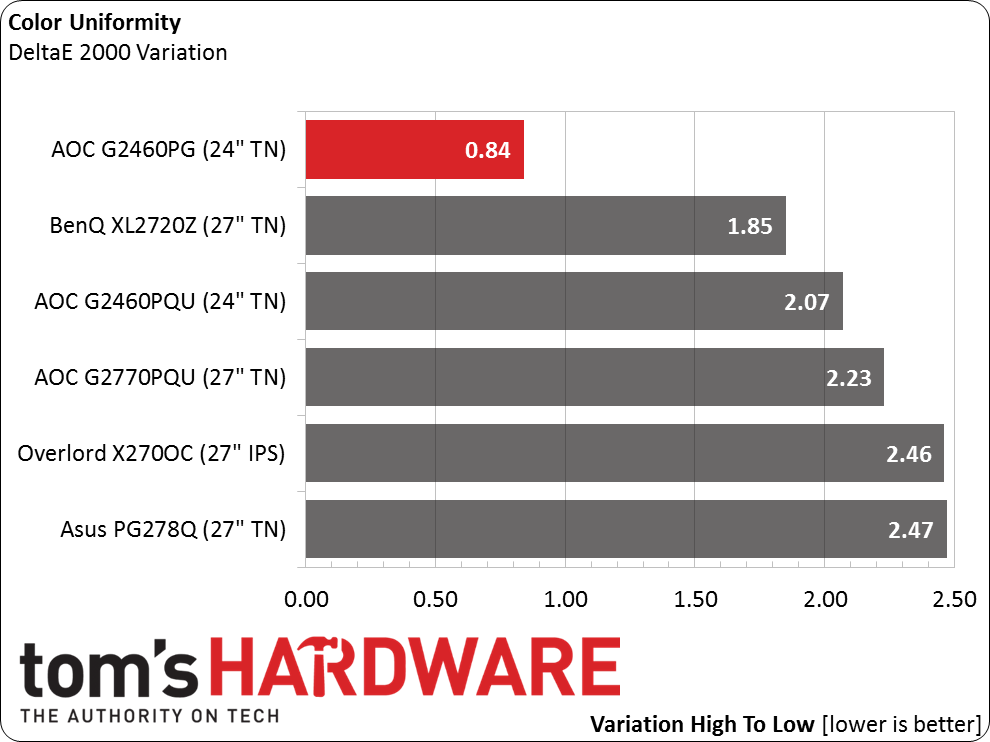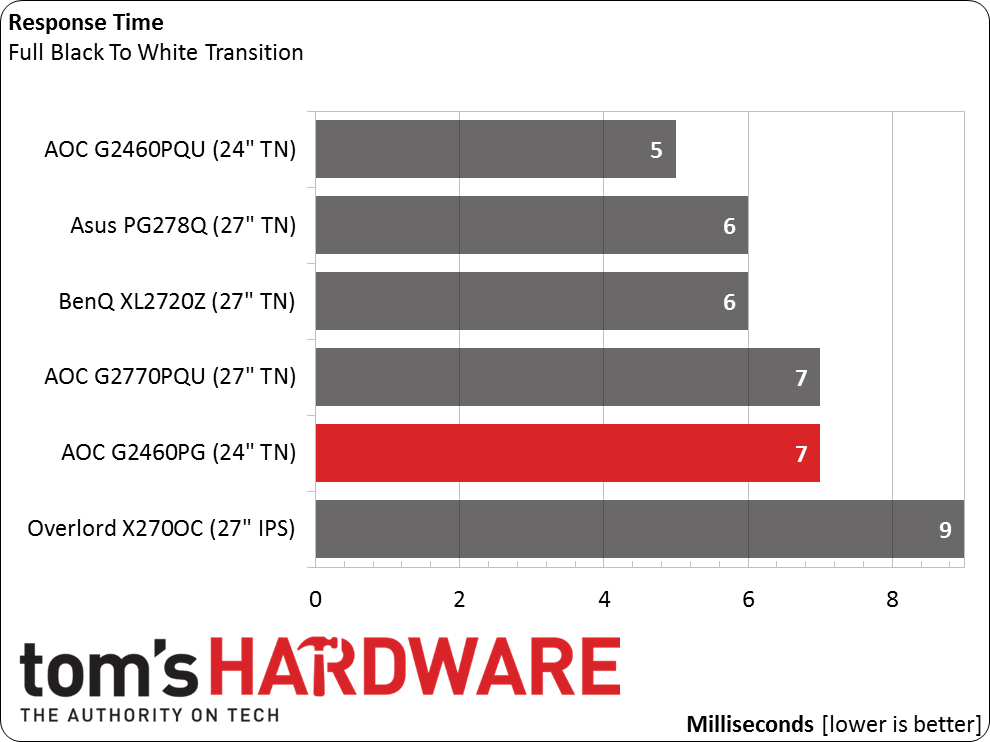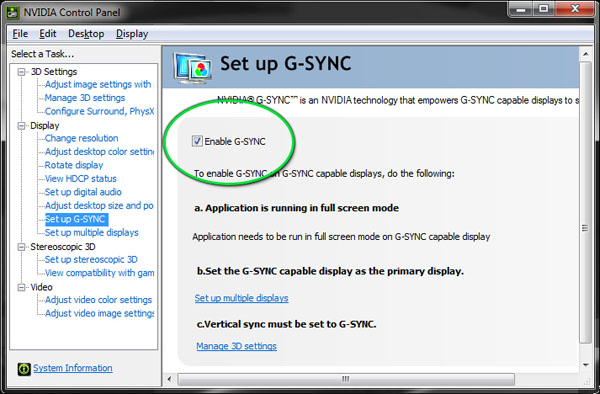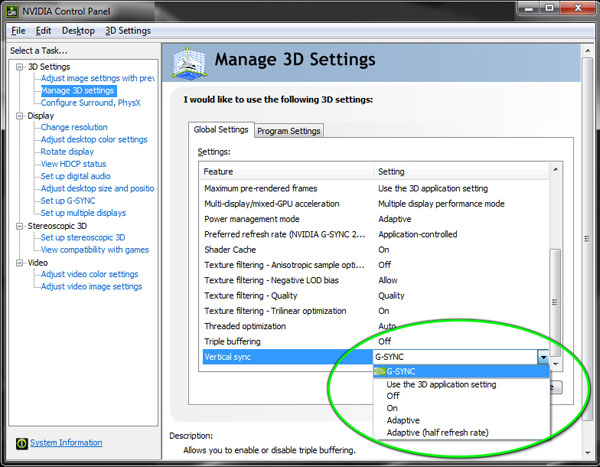AOC G2460PG 24-Inch Monitor Review: G-Sync Gets Cheaper
Many G-Sync-equipped monitors have been announced, but up until now, only Asus delivered. Today we review our second display with Nvidia's tech: AOC’s G2460PG. It’s a 24-inch TN screen with 144Hz refresh and a built-in motion blur reduction feature.
Why you can trust Tom's Hardware
Results: Viewing Angles, Uniformity, Response And Lag
To learn how we measure screen uniformity, please click here.
TN-based panels have a well-known weakness when it comes to off-axis image quality. In the 24-inch form factor, it's only a minor flaw though. The main degradation happens to the sides at 45 degrees and beyond, where color shifts decidedly to a reddish-green and light output drops by around 50 percent. The top-down view is better in terms of color accuracy, but detail starts to wash out and the image becomes dimmer. Head-on, we see no issues. And, as you’ll see below, screen uniformity is quite good.
Screen Uniformity: Luminance
With the G2770PQU and XL2720Z looking freakishly good in this test, a result between seven and eight percent represents the best of the rest. We saw no light bleed or hot-spotting in our press sample, just a smooth black tone from edge to edge.
Here’s the white field measurement:
The white field result creeps over 11 percent. Still, we saw no issues worthy of concern. The Overlord display excels in this test, and many monitors we benchmark have less than a 10-percent deviation. Our G2460PG shows a slight dim area in the upper-left and the center zone runs a little brighter than the rest of the screen.
Screen Uniformity: Color
Pixel Response And Input Lag
Please click here to read up on our pixel response and input lag testing procedures.
The overwhelming reason to buy a monitor like this is for its fast response time and low input lag. We performed our tests at the PG2460PG’s maximum 144Hz refresh rate. Since our AccuPel signal generator only outputs 60Hz, we filmed a mouse movement that tells us the precise moment of input relative to the first appearance of an on-screen image.
Get Tom's Hardware's best news and in-depth reviews, straight to your inbox.
This is an extremely tight race, with only the IPS-based Overlord lagging a bit. And honestly, no one will be able to distinguish a two-millisecond draw time difference with their naked eye. Only our 1000FPS camera knows the truth!
The other takeaway from our response test is confirmation that the G2460PG does not use pulse-width modulation to reduce the backlight level as long as ULMB is turned off. Few users can perceive flicker in any monitor, but those who are sensitive will have no issues with this AOC.
Here are the lag results:
The G2460PG is beaten only by its stablemate in the lag metric. Five milliseconds is an easy sacrifice to make for the image quality improvement introduced by G-Sync. Even gamers with the quickest reflexes will appreciate the responsiveness that comes with 144Hz operation.
G-Sync And ULMB
As we’ve said in the past, there are no tests able to differentiate one G-Sync-equipped monitor from another. The technology either works or it doesn’t. We had no problems using it once we checked a couple of boxes in the Nvidia control panel.
First, enable G-Sync in the Set up G-Sync dialog.
Then, make sure G-Sync is selected in the Vertical Sync drop-down under Manage 3D Settings.
As we said on page three, ULMB is more than just an on-or-off option. Once it’s enabled, you can set the pulse width in the OSD’s Extra menu to control light output. Since the G2460PG isn’t super-bright, we recommend leaving the setting at 100. Going any lower severely dims the picture (by as much as 90 percent at level 25). In our opinion, it’s better to use the 144Hz mode instead. That way you get plenty of motion blur reduction without paying a brightness penalty. To AOC’s credit, it lets you set brightness and contrast separately so you can leave the backlight maxed when ULMB is on and return to a different output setting when it’s off.
Current page: Results: Viewing Angles, Uniformity, Response And Lag
Prev Page Results: Color Gamut And Performance Next Page AOC G2460PG: Premium Gaming With G-Sync
Christian Eberle is a Contributing Editor for Tom's Hardware US. He's a veteran reviewer of A/V equipment, specializing in monitors. Christian began his obsession with tech when he built his first PC in 1991, a 286 running DOS 3.0 at a blazing 12MHz. In 2006, he undertook training from the Imaging Science Foundation in video calibration and testing and thus started a passion for precise imaging that persists to this day. He is also a professional musician with a degree from the New England Conservatory as a classical bassoonist which he used to good effect as a performer with the West Point Army Band from 1987 to 2013. He enjoys watching movies and listening to high-end audio in his custom-built home theater and can be seen riding trails near his home on a race-ready ICE VTX recumbent trike. Christian enjoys the endless summer in Florida where he lives with his wife and Chihuahua and plays with orchestras around the state.
